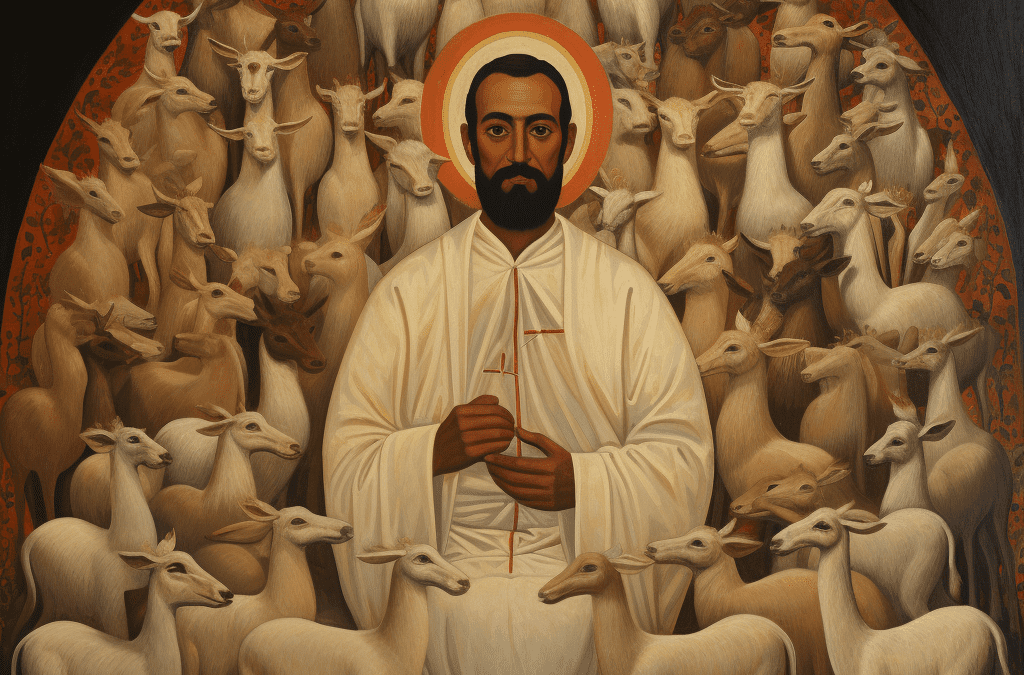If there were a Mount Rushmore for Reformed intellectuals, it would likely feature Abraham Kuyper’s imposing and jowly visage. Few individuals in the Anglo-Dutch Calvinist tradition can claim such a wide-ranging legacy. In fact, few individuals of any notoriety provide such a vivid representation of European intellectual and political life in the late nineteenth and early twentieth century. Over the course of his extraordinary career, Kuyper served as a journalist, theologian, political organizer, and—for four tumultuous years—prime minister of the Netherlands. Yet for those evangelicals, like myself, who were not raised in the Dutch Calvinist tradition, the legacy of Kuyper has often been translated by other, more recognizably American voices. In fact, it is usually the transplanted ideas of Kuyper, rather than his native politics, personality, or writings that impress upon the evangelical mind. Various North American Calvinists, of both the neo- and paleo- variety, have picked up Kuyperian notions of sphere sovereignty, the theory that each sphere of life is created by God and has its own distinct authority. Even non-Calvinist pulpits have preached Kuyper’s famous line that there is no square inch over which Christ does not exclaim “Mine!” The principles and oft-quoted phrases are front and centre. Less familiar are the personal, cultural, and philosophical factors that ground Kuyper’s commitments and explain why his writings have been so influential for so many.
James Bratt’s new book, Abraham Kuyper: Modern Calvinist, Christian Democrat, is the first full-length biography of the Dutch giant in the English language. One of the work’s many virtues is the way in which Bratt manages to situate Kuyper’s more abstract ideas in the sprawling intellectual and cultural history of northern Europe in his day. Bratt’s Kuyper does not breathe rarefied air; he is a man of his time—a modern and a traditionalist, a reader of G.W.F. Hegel and Jan Laski, a political boss and an unrepentant romantic (in all senses of the term). It is this last trait that may strike the contemporary evangelical reader as the most surprising. After all, many of us now think of Kuyper as the author of an orderly system of thought and practice. Of course, as Bratt comments, Kuyper himself claimed “with some justice” that he was “a consistent and systematic thinker, proceeding from fixed principles to their logical conclusions.” Beneath the geometric surface of Kuyper’s orderly spheres, however, Bratt’s biography reveals a man of formidable and sometimes quixotic passions and loves. In Bratt’s telling, Kuyper lived amid the cross-pressures of fin de siècle Europe—that poignant historical moment caught between the old ways of confessional Christendom and the new cosmopolitan hopes of modernity.
As Bratt notes, Kuyper’s intellectual instincts attracted him to philosophies that promised a way to combine the principles of these traditional and modern modes of life. From his early acceptance of a Calvin-haunted form of Unitarianism, to his dabbling in the evangelical Holiness movement and German Idealism, to his later adaptation of high Calvinism, Kuyper was a synthetic thinker. He was driven to find the core ideas that could preserve what he valued in his historical tradition—including its Calvinistic morality and its uniquely Dutch perspective on the dangers of revolutionary liberalism.
Like many of his contemporaries, Kuyper was inclined to read history teleologically: as a tale of cumulative progress. Looking to the apparent industrial and bourgeois advances made in Christian Europe, Kuyper saw evidence of common grace at work. Specifically, he believed that it was Protestant Europeans and Americans who had managed to subdue “the ‘lower’ passions beneath ‘higher’ ideals.” For Kuyper, it was no accident that a civilization built on these transcendent ideals would be destined for global mastery. In his own delicate manner, Bratt suggests that this idealism was both one of Kuyper’s greatest strengths and his worst blind spot. On one hand, Kuyper’s grand vision proved remarkably effective in organizing ecclesiastical and political coalitions, reanimating what were once considered the dry bones of Calvinist orthodoxy. On the other hand, Kuyper’s emphasis on the transformative power of ideas often undermined his ability to get along with his coalition partners. Bratt notes that Kuyper characteristically “overemphasized the power of ‘principle’ to command history,” and, like many visionaries, failed to see how his idealism could run roughshod over relationships he probably ought to have valued more than he did.
It is Bratt’s perceptiveness on this matter that casts his concluding admonition in a curious light. For, although he holds Kuyper accountable for his irascibility, Bratt also suggests that contemporary evangelicalism could stand to learn something from the Dutch polymath. Kuyperian neo-Calvinism, Bratt suggests, “is the only resource available besides neo-Thomism to rescue American evangelicalism from cultural irrelevance.” In the pluralistic context of modern society, we need “to unite the warm heart at which evangelicalism excels with the furnished mind that public engagement requires.” Here in his conclusion, and in a handful of preceding passages, Bratt is refreshingly frank: he believes that Kuyper provides an exemplary model for how contemporary evangelicals might correct our own tendencies toward free-market idolatry, uncritical patriotism, and anti-intellectualism. Crucially, Bratt argues, it is Kuyper’s appeal to “transcendent principles” that provides him with the resources he needs to resist these temptations.
Perhaps Bratt is correct. After all, he is not the first to suggest that Kuyper’s contemporary relevance is primarily found in his principled approach to engaging modern society. At the same time, even the best of principles are of little practical use if they are only formal; that is, if they are not filled out with meaningful content. Bratt comments that even Kuyper’s most memorable speech, on “Sphere Sovereignty,” trades on a formal idea that emerged from a very specific context—a centuries-old Dutch republican tradition that differs from ours in significant respects. This poses a challenge for contemporary readers. It is one thing to talk about the sovereign spheres of family, church, and state; it is another thing for particular communities to come to an agreement over the authority of each sphere. Where do the boundaries lie? What are the common goods of the family, church, and state? Can they overlap? In the American context, those of a libertarian persuasion will draw a much tighter boundary around the state. Likewise, younger evangelicals and Kuyperians who have read John Howard Yoder or Stanley Hauerwas may want to redefine the ecclesial sphere to include political functions that rival the state. On top of all this, there is the awkward fact that Kuyper’s own social policies fail to fit neatly into our contemporary categories of “conservatism” or “progressivism.” Kuyper is an equal-opportunity offender, looking too much like a communitarian socialist to the conservatives and too much like a bourgeois traditionalist to the progressives.
What then of Kuyper’s legacy? While rival wings of the tradition might differ over how to apply its core principles, there are other aspects and dispositions that Bratt helpfully brings to the fore. Perhaps most intriguing is Bratt’s portrayal of Kuyper’s eclecticism. Like his favourite seventeenth-century Reformed scholastics, Kuyper was a sort of encyclopedist, looking for wisdom and practical knowledge in every square inch of creation. Reading Bratt’s account, the virtues of this approach become evident in Kuyper’s intellectual development. Over the course of his life, Kuyper marshalled the cultural and philosophical resources of high modern intellectual life like few others ever did. He imbibed Calvin and the Reformed scholastics as well as Hegel and the German Idealists. He helped to create a political movement that stood against what he considered godless (that is, French) liberalism while still acknowledging his debts to the early modern liberals who had defended the importance of constitutional liberties. His Anti-Revolutionary party drew on a proud and complicated Dutch Protestant heritage while simultaneously summoning Catholic compatriots to the fight against secularism.
This eclecticism becomes even more interesting when connected with Kuyper’s philosophy of history, which Bratt reminds us was more Hegelian than Darwinian in character. Simply put, Kuyper believed there was a purpose to history and that traditions develop into more mature forms by becoming conscious of their origins, tensions, and potentiality. Occasionally, this philosophy of history could prompt Kuyper to make troubling claims about the superiority of more “advanced” European cultures. To his credit, Bratt does not turn a blind eye to some of the vicious implications of Kuyper’s views—particularly, the way they were applied by advocates of South African apartheid.
At the same time, Kuyper’s eclecticism allowed him to view the world in a providential light. People, communities, and nations participate in all variety of relational spheres, or covenants. These covenants, in turn, are the means by which individuals come to recognize and value the common goods that God has given to us. They allow us to see our neighbours as fellow bearers of the divine image, even as they are enwrapped in all sorts of “transitional, mixed, and unconscious circumstances,” as Bratt puts it.
In the Protestant scholastic tradition that Kuyper came to appreciate so deeply, theologians would distinguish between various sorts of covenants—familial, ecclesial, national—as a way of talking about the kinds of goods that ought to characterize human relationships. For instance, the relationship between a parent and a child ought to foster certain virtues—prudence and mercy in the parent, filial piety and self-sufficiency in the child. Likewise, relations between political rulers and their subjects ought to promote the welfare of the community and the moral formation of its citizens. The recognition of shared goods is primary, and the formal boundaries of the various “spheres” could shift based upon the specific character of the community. What mattered fundamentally was the cultivation of virtuous individuals and the flourishing of the tradition itself.
This emphasis goes a long way to explain what Bratt highlights as Kuyper’s intense concern for Christian education and moral formation. The way to keep a tradition alive is to protect its most foundational communities, like the family, church, and civil society. It is here, ideally, that individuals are taught to recognize (and love) justice and piety, and are then equipped to resist the sway of totalizing ideas and arbitrary power. Bratt puts this nicely: individuals formed in these contexts are able to serve as a “counterpoise to the engrossing state.” Interestingly, the hallmark of Kuyperian moral formation does not appear to be free-standing principles, as we might have expected, so much as the impetus to recognize all that is true and good and worth preserving in the community that God has given us.
In the end, Bratt’s concluding admonition falls close to the mark. The better angels of the Kuyperian tradition do appear well-suited as a corrective to the provincial and anti-intellectual tendencies of North American evangelicalism. At the same time, Kuyper’s own example instructs us that traditions need more than abstract principles and orderly schemas to remain vital. Without rightly ordered loves and relationships, communities and their spheres of life can wither away or, worse, become institutions of injustice and oppression. If Bratt’s wonderful account teaches us one lesson, it is that intellectual communities like neo-Calvinism need to remember that formal ideals are no more than dry bones if they lack the Spirit. Even more than principles, these communities require individuals—like Kuyper at his best—who love justice and search for grace in even the most surprising places.


